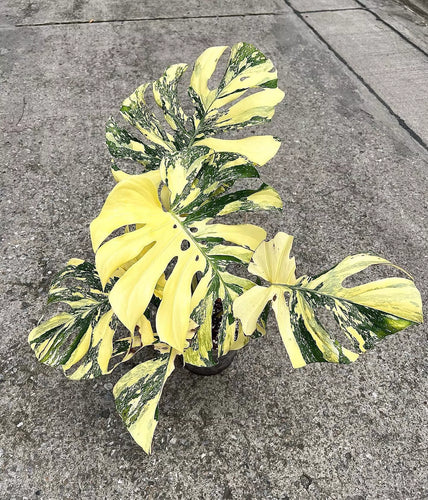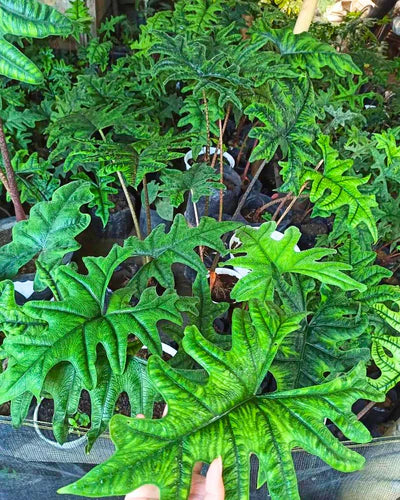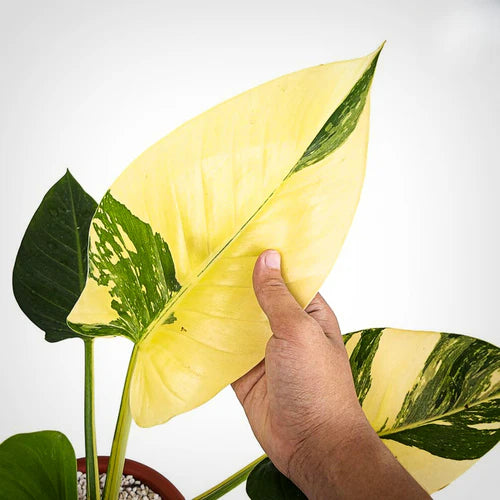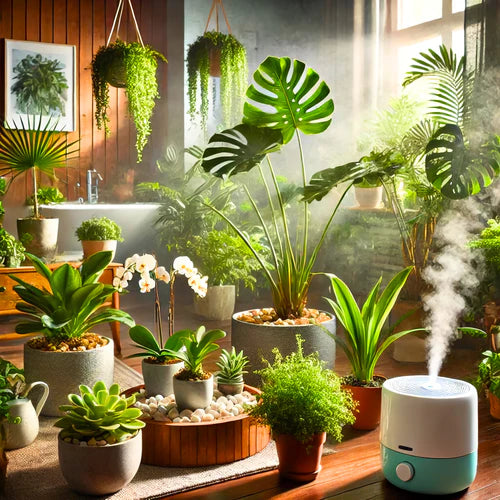How to Grow and Care for Syngonium Albo Variegata
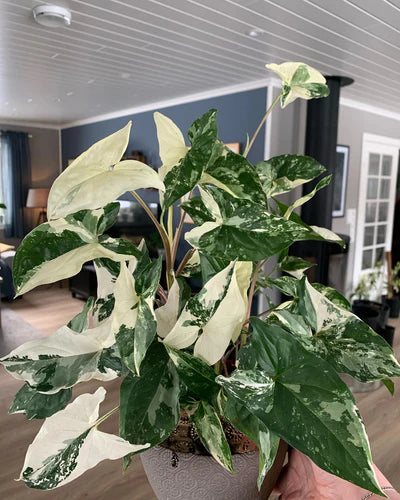
How to Grow and Care for Syngonium Albo: The Complete Guide
Table of Contents
- Introduction
- What is Syngonium Albo?
- Basic Requirements for Growing Syngonium Albo
- Soil Preferences
- Light Requirements
- Watering Techniques
- Humidity and Temperature
- Feeding and Fertilizers
- Pest Control
- Pruning and Training
- Propagation Methods
- Common Mistakes to Avoid
- Syngonium Albo Variegata vs Syngonium Podophyllum
- How to Purchase a Healthy Syngonium Albo
- FAQs and Conclusion
Your Essential Shopping List
- Humidifier
- Aroid Mix
- Worm Castings
- Organic Compost
- Moisture Meter
- Grow Lights
- Light Meter
🌿 Get ready to dive into the beautiful world of Syngonium Albo! Enhance your plant collection by using these must-have items. Click the links to shop now! 🌿
Introduction
Hello, plant enthusiasts! Today, we're going to explore the fascinating world of Syngonium Albo, also known as the Variegated Arrowhead Vine. This plant is gaining popularity among houseplant lovers, and for a good reason. Its stunning leaves and easy-care nature make it a great addition to your indoor garden. This guide will cover everything you need to know from the basic requirements to expert tips on care and propagation. So, let's dive in!
What is Syngonium Albo?
The Syngonium Albo, scientifically known as Syngonium podophyllum albo-variegata, is a beautiful houseplant with a trailing or climbing habit. Native to tropical rainforests, this plant is well-known for its variegated leaves that come in shades of green and white. You can find a beautiful Syngonium Albo Variegata for sale near me.
Basic Requirements for Growing Syngonium Albo
Soil Preferences
Good soil is the foundation of a healthy plant. For Syngonium Albo, you'll want to use a well-draining soil mix. You can create your own mix with organic compost and perlite for added drainage. A pre-made aroid mix is also an excellent choice for this plant.
Light Requirements
Syngonium Albo enjoys bright, indirect light. However, it can also tolerate low light conditions, making it quite versatile. If you're not sure about the light conditions in your home, a light meter can come in handy.
Watering Techniques
It's essential to keep the soil moist but not waterlogged. Overwatering can lead to root rot, a common issue with many houseplants. To keep tabs on soil moisture levels, a moisture meter is a useful tool. When the meter reads "dry," it's time to water your Syngonium Albo.
Humidity and Temperature
Being a tropical plant, Syngonium Albo thrives in high humidity. A humidifier is beneficial in creating the ideal environment, especially during dry winter months.
Feeding and Fertilizers
The Importance of Fertilizing
Providing the right nutrients is crucial for the growth and vitality of your Syngonium Albo. The plant primarily needs Nitrogen, Phosphorus, and Potassium, along with trace amounts of other micronutrients.
Best Fertilizers to Use
For optimum growth, it's advised to use a balanced, water-soluble fertilizer. A slow-release fertilizer can be mixed into the soil, providing steady nutrition over an extended period. Alternatively, you can opt for organic options like worm castings.
Fertilizing Schedule
During the growing season (spring and summer), fertilize your plant every 4-6 weeks. In the fall and winter, cut back on feeding as the plant’s growth slows down.
Pest Control
Common Pests and How to Identify Them
Like most houseplants, Syngonium Albo can be prone to pests like aphids, mealybugs, and spider mites. Regularly inspect your plant for signs of infestation, such as distorted leaves or a sticky substance on the foliage.
Effective Treatments
For mild infestations, insecticidal soap is an excellent first line of defense. For more stubborn pests, Bonide Systemic Houseplant Insect Control is effective.
Preventative Measures
Regularly wiping the leaves and maintaining proper humidity can prevent most infestations. If you prefer natural solutions, neem oil is a great option for prevention.
Pruning and Training
When to Prune
Pruning is essential to encourage bushier growth and can be done at any time of the year. However, spring is generally the best season for this task.
Training Your Plant
If you prefer a climbing Syngonium Albo, consider using a clear moss pole for climbing plants. This will give your plant the necessary support to grow upwards, mimicking its natural environment.
Propagation Methods
Cuttings
Taking stem cuttings is the most straightforward method for propagating Syngonium Albo. Ensure you cut just below a node and root it in water or directly in soil.
Division
For larger plants, division is another method. Simply separate the plant into smaller sections, making sure each section has enough roots and leaves.
Boosting Propagation Success
For better root development, you can use sphagnum moss as a rooting medium. It retains moisture and provides the cuttings with the humidity they require.
Common Mistakes to Avoid
Overwatering
One of the most common mistakes is overwatering your Syngonium Albo. This can lead to root rot and ultimately the demise of your beloved plant. Always check the soil’s moisture using a moisture meter before watering.
Inadequate Light
Another common mistake is providing inadequate light. Using a light meter can help you determine if your plant is getting the right amount of light.
Ignoring Signs of Pests or Disease
Never ignore the signs of pests or diseases as it can quickly escalate, causing severe damage to your plant. Quick action is crucial for a healthy Syngonium Albo.
Where to Buy Healthy Syngonium Albo
Availability and Price Range
As a sought-after variety, finding a Syngonium Albo might be a bit challenging. But worry not, they are available for purchase on PlantVault.
Check Local Nurseries
Local nurseries often offer the best plants, as you can personally inspect each one. Don’t forget to look for the tag "Syngonium Albo Variegata" or "Syngonium Podophyllum Albo" to ensure you are getting the correct variant.
Online Retailers
When searching online, use the keywords "for sale near me" to find the closest available option.
Comparisons with Similar Species
Syngonium Albo vs. Syngonium Pink Splash
While both are stunning, the Albo variety is known for its white variegation, whereas the Pink Splash is famous for its pink variegation.
Syngonium Albo vs. Syngonium Podophyllum
The main difference between the two lies in the variegation. The Albo has white variegation, while the Podophyllum usually comes with green leaves.
Conclusion and Final Thoughts
Syngonium Albo, also known as Syngonium Podophyllum Albo-variegatum, is a beautiful, show-stopping plant that is relatively easy to care for. Whether you're a seasoned gardener or a complete beginner, this plant offers something for everyone.
By following our comprehensive guide, you can ensure that your Syngonium Albo stays healthy and vibrant for years to come.
FAQ About Syngonium Albo Variegata
How big does Syngonium Albo get?
The plant can grow up to 3-6 feet in height with proper care and support.
Does Syngonium Albo like to be root bound?
No, it prefers a well-draining potting mix and room for its roots to grow.
Why is Syngonium Albo so expensive?
The plant is relatively rare and highly sought after, which drives up the price.
How do I make my Syngonium Albo more variegated?
Optimal light conditions and careful pruning can help increase variegation.
Are Syngonium Albo rare?
While not extremely rare, the Syngonium Albo is less commonly found than other Syngonium varieties, making it a sought-after plant among enthusiasts.
How often do you water Syngonium Albo?
The frequency of watering can vary based on several factors such as humidity, temperature, and the size of the pot. It's best to check the soil moisture and water when the top 1-2 inches are dry.
How big do Syngonium Albo grow?
With proper care, Syngonium Albo can reach a height of 3-6 feet. They can be trained to climb or allowed to trail, depending on your preference.
Do Syngonium Albos like to be root bound?
Syngonium Albo generally prefers a well-draining potting mix and adequate room for its roots to grow. It does not prefer to be root bound.
What is the rarest Syngonium?
The rarest Syngonium would likely be specific variegated forms or hybrids that are less commonly propagated. The Syngonium Albo Variegata is among the rarer types due to its stunning variegation.
Is Syngonium Albo a climbing plant?
Yes, the Syngonium Albo can be trained to climb using a moss pole.
Is Syngonium Albo Variegata rare?
Yes, the variegated form, known as Syngonium Albo Variegata, is relatively rare and tends to be more expensive than the non-variegated types.
How do I get more variegation on my Syngonium Albo?
Increased light exposure can often bring out more variegation, but be careful not to expose the plant to too much direct sunlight as it can cause leaf burn.


